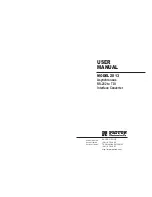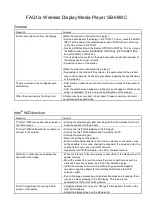
TPS61090, TPS61091, TPS61092
SLVS484C – JUNE 2003 – REVISED DECEMBER 2014
www.ti.com
Feature Description (continued)
9.3.6 Power Save Mode and Synchronization
The SYNC pin can be used to select different operation modes. To enable power save, SYNC must be set low.
Power save mode is used to improve efficiency at light load. In power save mode the converter only operates
when the output voltage trips below a set threshold voltage. It ramps up the output voltage with one or several
pulses and goes again into power save mode once the output voltage exceeds the set threshold voltage. This
power save mode can be disabled by setting the SYNC to VBAT.
Applying an external clock with a duty cycle between 30% and 70% at the SYNC pin forces the converter to
operate at the applied clock frequency. The external frequency has to be in the range of about ±20% of the
nominal internal frequency. Detailed values are shown in the electrical characteristic section of the data sheet.
9.3.7 Low Battery Detector Circuit—LBI/LBO
The low-battery detector circuit is typically used to supervise the battery voltage and to generate an error flag
when the battery voltage drops below a user-set threshold voltage. The function is active only when the device is
enabled. When the device is disabled, the LBO pin is high-impedance. The switching threshold is 500 mV at LBI.
During normal operation, LBO stays at high impedance when the voltage, applied at LBI, is above the threshold.
It is active low when the voltage at LBI goes below 500 mV.
The battery voltage, at which the detection circuit switches, can be programmed with a resistive divider
connected to the LBI pin. The resistive divider scales down the battery voltage to a voltage level of 500 mV,
which is then compared to the LBI threshold voltage. The LBI pin has a built-in hysteresis of 10 mV. See the
application section for more details about the programming of the LBI threshold. If the low-battery detection
circuit is not used, the LBI pin should be connected to GND (or to VBAT) and the LBO pin can be left
unconnected. Do not let the LBI pin float.
9.3.8 Low-EMI Switch
The device integrates a circuit that removes the ringing that typically appears on the SW node when the
converter enters discontinuous current mode. In this case, the current through the inductor ramps to zero and the
rectifying PMOS switch is turned off to prevent a reverse current flowing from the output capacitors back to the
battery. Due to the remaining energy that is stored in parasitic components of the semiconductor and the
inductor, a ringing on the SW pin is induced. The integrated antiringing switch clamps this voltage to VBAT and
therefore dampens ringing.
9.4 Device Functional Modes
Table 2. TPS61090 Operation Mode
MODE
DESCRIPTION
CONDITION
SYNC pin is high, across whole load SYNC pin is low,
PWM
Boost in normal switching operation
medium to heavy load.
PFM
Boost in power save operation
SYNC pin is low, light load.
12
Submit Documentation Feedback
Copyright © 2003–2014, Texas Instruments Incorporated
Product Folder Links:
TPS61090 TPS61091 TPS61092













































